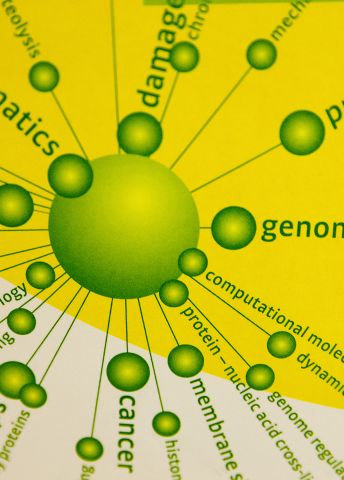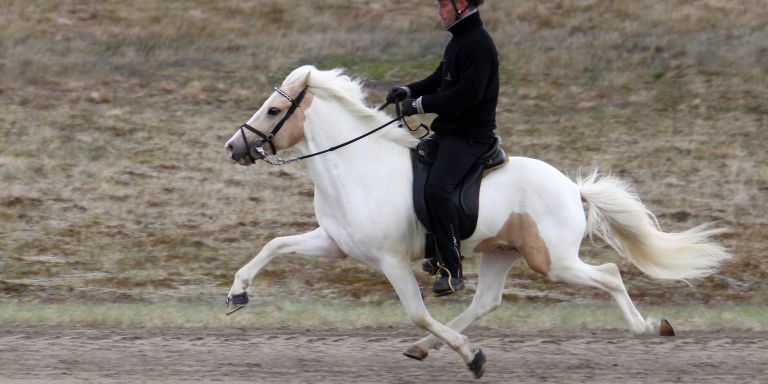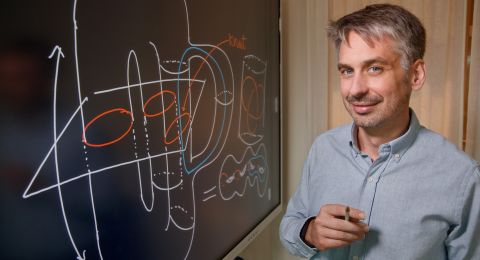
Project Grants 2012
Animal Functional Genomics
Principal investigator:
Leif Andersson, Professor of Functional Genomics
Institution:
Uppsala University
Grant in SEK:
SEK 31 million over five years
Icelandic horses are famous for their ability to perform two ambling gaits, tölt and pace. But many horse breeds in the world have the ability to move at more than a walk, trot and gallop. In the 9th century, the tölting horses were most likely also common here in Scandinavia. The tölt, and other similar ambling gaits, is pleasant for a rider who must travel long distances because the horse has always one foot on the ground and there is a minimal of vertical movement. It is just as comfortable as a walk, but goes almost as fast as a trot.
The Vikings took these rackers and amblers with them to Iceland and these gaits have continued to be important there. The landscape is impassable and there are few roads. Icelanders therefore like to ride horses. But here in Scandinavia, we instead gradually began riding wagons.
“It is possible that as the horses became more important as a draft animal in agriculture and forestry these gaits became a disadvantage and disappeared by breeding,” says Leif Andersson, Professor of Functional Genomics at Uppsala.
However, what it is that actually gives the horses the ability to move with several gaits? When researchers announced a few years ago that they had mapped the horse's entire genome, Leif Andersson realized that it began to be possible to get answers to this question.
A gene with an unknown function enables the amble
They started to make an attempt to explain the flying pace; a fast gait where the horse moves front and hind legs on the same side of the body in parallel and simultaneously. Half of all Icelandic horses can pace, half cannot. Leif Andersson's research team therefore conducted analyses of 40 pacers and 30 non-pacers. They searched among the 50,000 genetic variations that had become known thanks to the mapping of the genome. Surprisingly enough, it turned out that the pace was traceable to a single one of all of these variations. There is rarely one single gene that lies behind such a complex trait as coordination of movement.
“We knew that there is a strong hereditary component, but that does not necessarily mean that there is only one gene involved. A good comparison is the height of people. Several hundred, if not thousand, genes are connected to height. Each one explains a tiny part of the variation among humans,” says Leif Andersson.
The mutation that gives the pace turned out to sit in a gene that codes for a protein with an unknown function: doublesex and mab-3 related transcription factor 3. The somewhat long and difficult name, which is abbreviated DMRT3, comes from changes in a related gene, called DMRT1, causing disturbances in gender development. Since DMRT3 is similar to this gene and is also its neighbor on the chromosome, researchers have thought that both have a similar function. But this assumption, as became clear, proved to be completely wrong. DMRT3 has its most important role in the nerve system.

Nerve cells in the spinal marrow connect differently
A gene contains the design for what a protein should look like; it is a code that the cell reads when it makes proteins. When Leif Andersson's research team was looking for the protein that corresponds to the code in DMRT3, they found the protein in special nerve cells in the spinal cord. These nerve cells, also called neurons, cross the middle line of the spinal cord and are a part of the communication between the right and left half of the body.
“They are of central importance when you move. You must coordinate the left and right side,” says Leif Andersson.
These coordination neurons connect directly to so-called motor neurons that control the contraction of muscles. Leif Andersson believes that the neurons prevent muscles from moving.
“Imagine that you put your left leg forward and then the neuron will prevent the extension of the left arm. However, the right arm can swing forward. I walk to work every day and you automatically fall into this. I can pace short distances but only as long as my brain forces my legs and arms to pace, as soon as I stop thinking I believe that my DMRT3 neurons take over and put me back in the classical diagonal movement that almost all people do. Take a look the next time you watch other people walking!”
When Leif Andersson began researching the function of DMRT3, it turned out that US researchers had already disabled the gene in mice with the goal of understanding its function.
“But not much happened. They saw no disruption in terms of gender development,” says Leif Andersson.
However, what the researchers missed was that the mice with the DMRT3 mutation were worse at moving. When the research team in Uppsala began studying them, they let them run on a rolling mat.
“When we increased the speed, they were no longer able to keep up. They were less able to coordinate their legs,” he says.

Leif Andersson recently received financing from the Knut and Alice Wallenberg Foundation to continue investigating DMRT3's effects in the body. Among other things, he suspects that people who pace can have genetic changes in this gene:
“Now, compulsory military service has been discontinued in Sweden. But everyone who did it remembers that there was always somebody who tended to pace when they should have marched.”
He also believes that the gene may explain why people who have been born with a cerebral palsy injury are afflicted by cramps. This is a line that Leif Andersson will investigate further.
Text Ann Fernholm
Translation Semantix
Photo Magnus Bergström



